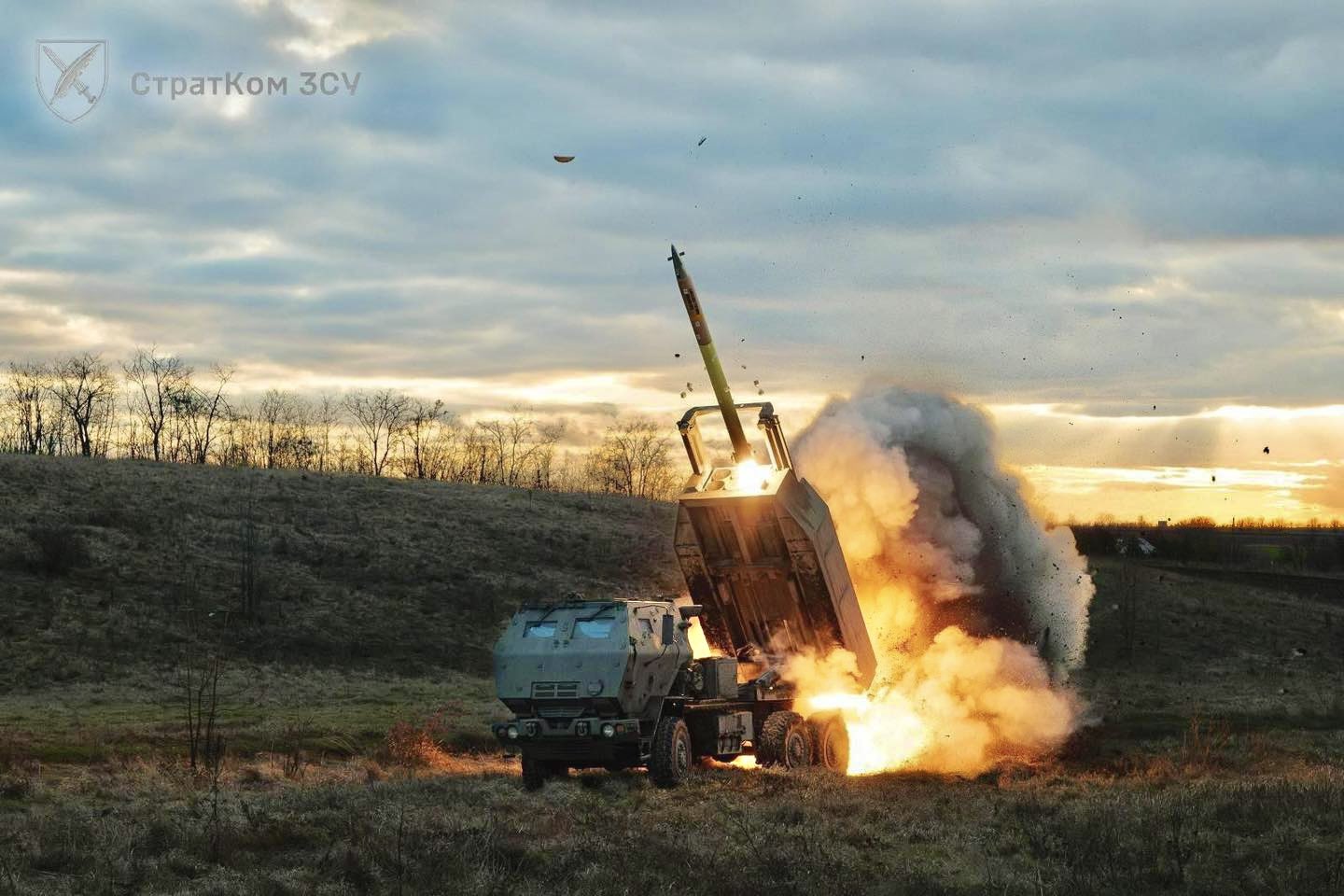The United States is bolstering its firepower across the Indo-Pacific in what appears to be an attempt to challenge China’s growing military presence in the region. In line with this, it is now transitioning its artillery units based in Hawaii from Howitzers to more lethal and battle-proven HIMARS (High Mobility Artillery Rocket System).
The U.S. Army announced in mid-July that it is replacing eight 105mm howitzers and six 155mm howitzers with 16 HIMARS launchers for the 25th Infantry Division at Schofield Barracks in Hawaii, to support readiness in the Indo-Pacific region.
The additional launchers will improve the division’s long-range precision fire capability, lethality, and warfighting readiness, according to the Army.
HIMARS, a mounted, multiple rocket launcher, will give the U.S. Army units a flexible and mobile, long-range option on the battlefield. The transition involves retraining 73 cannoner Soldiers (13B) to become HIMARS crew members with a net reduction of 119 personnel.
The move is part of the Army Transformation Initiative (ATI) that was launched on May 1, 2025. The ATI is a comprehensive strategy designed to modernize and restructure the Army in response to rapidly evolving global threats and technological advancements.
The initiative is led by Secretary of Defense Pete Hegseth and aligns with calls for divesting “outdated, redundant, and inefficient” programs in favor of new priorities.
Though the Howitzer has been the backbone of the U.S. Army’s artillery for many decades, the HIMARS represents a very significant improvement in firepower. The system has proven its combat mettle in the Ukraine War, where its deployment initially forced the Russians to withdraw from the frontline.
Ukraine’s success with HIMARS, including strikes on Russian command nodes and ammunition depots, has underscored its battlefield effectiveness. This has influenced U.S. Army modernization efforts, prioritizing systems that offer “shoot-and-scoot” capabilities to evade counter-battery fire.
In contrast, the high wear on M777 barrels in Ukraine has highlighted the maintenance challenges of intensive howitzer use, pushing interest in lower-maintenance rocket systems like HIMARS.
“It’s clear that the HIMARS weapon system will make us more lethal at the end of the day,” 25th ID commander Maj. Gen. Marcus Evans told reporters last month after the announcement. “It extends the range of long-range precision fires, while still retaining the capability to win in the close fight with the mobile brigades with the cannon artillery.”
The development comes amid a sustained threat of a conflict with China, as the latter aggressively expands its military presence in the region and beyond.
The goal of China’s expanding military presence in the Indo-Pacific, especially its A2/AD capabilities, is to limit the freedom of movement of the United States and its allies in the region, particularly in the area surrounding the South China Sea, Taiwan Strait, and the “first island chain” that includes Japan, Taiwan, and the Philippines.
The People’s Liberation Army (PLA) employs advanced missile systems, naval forces, and air defenses to project power and assert control over disputed areas. Notably, these threats can be directly countered by the mobility, accuracy, and long-range capabilities of the HIMARS, especially in the event of a regional conflict or a potential Taiwan contingency, which could force the U.S. to intervene and fight a direct conflict with Beijing.
The 25th Infantry Division’s transition is tailored for the Indo-Pacific.
Hawaii, home to the U.S. Indo-Pacific Command, is a frontline island territory that would be crucial in combat with Beijing. Hawaii’s strategic location would enable rapid deployment, intelligence gathering, and coordination with allies across the Pacific. HIMARS would be a strategic addition to the Hawaii-based formation as it can be quickly repositioned across islands or remote bases, unlike towed howitzers that require more setup time.
“What the HIMARS gives us is agility,” Evans said. “Oftentimes when you combine [HIMARS] in in terms of flooding the zone, trying to confuse [the] adversary’s observation-sensing capability, and then having a piece of equipment that provides increased mobility like the HIMARS … you can now hide in the noise a little bit more, extend your operational reach, and you get increased mobility to be able to displace rapidly.”
The system will be used for multi-domain operations, integrating the system with electronic warfare units and drones. This will improve the U.S. Army’s capability to defeat highly skilled enemies. The deployment would be crucial for the archipelagos of the first island chain, where the Army expects to deploy its troops in a potential conflict.
The upgrade to this mobile artillery system could enhance its range and precision, as well as allow it to hit moving targets, such as ships in the Pacific Ocean. This could prove a game-changer in a potential conflict with China over Taiwan, where the longer-range rockets could allow the U.S. and its regional allies to control key waterways around Taiwan.
Moreover, the transition to HIMARS reduces personnel requirements due to its smaller crew needs compared to howitzer battalions.
It is pertinent to mention that the U.S. Army is still maintaining its traditional cannon artillery capability despite this shift. Division Artillery Commander Colonel Dan Von Benken stressed that HIMARS provides supplemental long-range, precise fires, while howitzers would continue to be used for close-combat support.
Notably, the use and deployment of HIMARS in the Indo-Pacific is not necessarily new to the Army. The system has been included in past training exercises, including in the Philippines during the last two years. For instance, Soldiers from the 1st Multi-Domain Task Force of the U.S. Army conducted a HIMARS live-fire exercise on June 30, 2025, at Fort Magsaysay Military Reservation alongside soldiers from the Philippine Army.
The U.S. has been making concerted efforts at bolstering its firepower in the region amid pacing threat from Beijing, as also evidenced by the deployment of Typhon missile system and Navy-Marine Corps Expeditionary Ship Interdiction Systems (NMESIS). The HIMARS, on its part, has also gained popularity globally, piquing the interest of buyers looking to upgrade their artillery. For instance, countries like Australia and Taiwan have acquired and integrated the system.

HIMARS – A Crucial Ground Combat Capability
With the war in Ukraine grinding on and Kyiv’s extensive use of HIMARS on the frontline, this American long-range artillery rocket system has become a popular name among military analysts.
The HIMARS consists of a medium-sized tactical truck loaded with six 227-millimeter GPS-guided rockets. It boasts a range of more than 43 miles [69 km]. The rocket is thirteen feet long and known as the Guided Multiple Launch Rocket System (GMLRS). Each rocket has a 200-pound, high-explosive warhead, and GPS guidance ensures each rocket can land within 16 feet of the designated aiming point.
According to Lockheed Martin, the HIMARS’s tactical missile range is between 69 and 499+ kilometers. This includes the 69-kilometer-range GMLRS, the 150-kilometer-range Extended-Range Guided MLRS (ER GMLRS), the 499-kilometer-range Precision Strike Missile (PrSM), and the 300-kilometer-range Army Tactical Missile System (ATACMS).
These tactical missiles have the potential to “shoot and scoot” to evade counter-battery fire since they are mounted on a wheeled chassis. This rapid relocation after firing minimizes vulnerability to counter-battery radar and drones, a key lesson from modern conflicts.
Moreover, it has an advanced digital fire control system with GPS/INS guidance, integrated with command networks for real-time targeting.
The lightweight design of HIMARS allows rapid deployment to remote or austere environments, critical for operations in the Indo-Pacific’s island chains or distributed battlefields. It can be transported by a C-130 military cargo aircraft in under 10 minutes.
More importantly, though, the HIMARS can integrate with joint forces, including drones, satellites, and electronic warfare systems, for real-time targeting and intelligence, and be used for rapid response operations in the event of a contingency.
It is designed for flexibility, deployability, and lethality, making it a key asset in modern U.S. Army and Marine Corps operations, particularly in expeditionary and contested environments like the Indo-Pacific. Moreover, the experts believe that it is ideal for distributed operations in the Pacific, where rapid repositioning is necessary.



